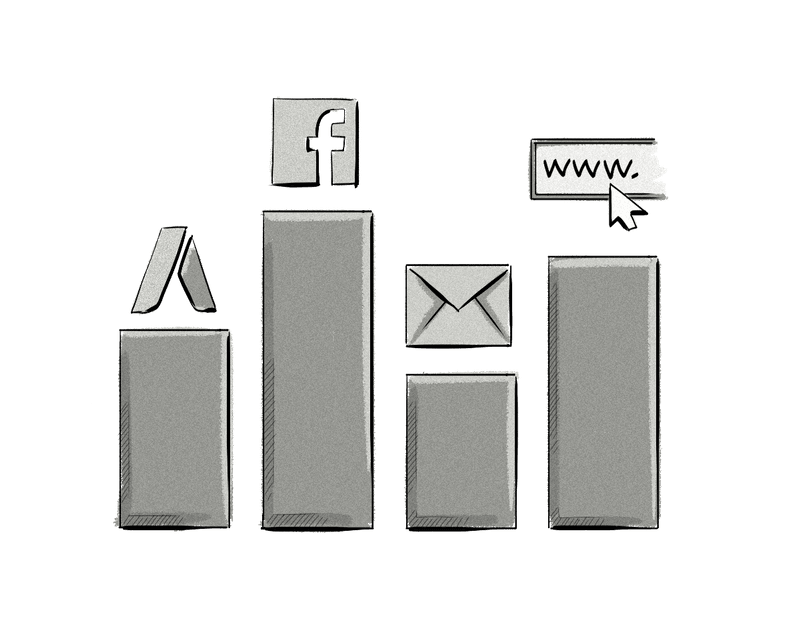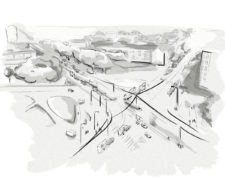The end goal of any business – be it an online and/or offline business – is to make money and increase profits over time.
And while there are many factors that determine the business’ ability to do this, the most influential part of it is often the work of marketers.
Marketers are responsible for getting the company’s name out there (awareness stage), persuading potential customers that their product or service is better than others (consideration stage), and luring potential customers in with free trials and discount offers (decision stage).
In order to achieve this, online marketers use a range of channels, some include the following:
- Advertising on social media (e.g. Facebook, Twitter, LinkedIn, etc.)
- Search engine optimization (SEO)
- Paid searches
- Email marketing
However, things start to get challenging when marketers have to determine which channels are bringing them the best results.
And that’s where attribution comes in.
Attribution is the process of assigning credit to one or many interactions (aka touchpoints) a consumer has with a brand over a period of time (known as the customer journey or conversion path) before they convert.
Attribution allows marketers to determine how the different channels impact the final conversion.
A conversion is any goal set up by a marketer. A goal could be when a consumer purchases a product, downloads a file (e.g. an ebook), or even fills in a contact form on a landing page.
So now the question is – if marketers are using a number of channels, how can they identify which ones are performing the best?
Well, luckily for marketers, there are a number of online, multi-touch attribution models that can help them identify which channels are bringing them the most customers, and which ones aren’t.
7 Multi-Touch Attribution Models For Conversion-Driven Marketers
1. The Last Interaction Attribution Model

The last interaction (aka last touchpoint) or last click model is the oldest model out of them all and is used by default in many web analytics tools along with the last non-direct model.
There is nothing sexy about this model – all it does is attribute 100% of a conversion to the last known refferal, click, or traffic source. So if the last action before a conversion was a direct entry, then 100% of the conversion would be attributed to the direct entry. Plain and simple.

The main disadvantage of this model is that it totally ignores the previous touchpoints in the customer journey and as a result can cause marketers to make some very bad business decisions.
2. The Last Non-Direct Attribution Model

The last non-direct attribution model is very similar to the previous model but with one essential difference – it removes direct visits from the equation. In this model, 100% of a conversion is attributed to the last known click or referral that wasn’t a direct visit.
This means that if a consumer first visited your website from Facebook, then came back via a direct visit and then converted, 100% of the conversion would be attributed to Facebook and 0% credit would be given to the direct visit.

This model is better than the last click model, but still over-simplifies the multi-channel journey.
Just like the last interaction model, the main disadvantage of this model is that it does not take into account the various touchpoints in the customer journey. This model can also lead to false insights and bad decisions.
3. The First Interaction Attribution Model

This model stands in opposition to the two previous models. The first interaction (or first touch) attribution model is focused on the first known touchpoint in the customer journey.
With the first interaction attribution model, 100% of the conversion is attributed to the first registered referral or click.

So for example, if a consumer first visited your website through an AdWords ad, then again from a Google search, then from a direct visit and finally converted and became your customer, then 100% of the conversion would be attributed to the AdWords interaction.
This model is very useful if your main objective is to increase your brand’s awareness and you want to focus on channels your potential customers will interact with first. However, this model is imperfect when applied in other use cases as it ignores all subsequent touchpoints in the conversion path.
4. The Linear Attribution Model

The linear attribution model is the first model that captures the true nature of channel overlap during the customer journey.
The linear model takes into account all touchpoints and clicks that can be attributed to a single conversion and aims to assign them equal credit.
For example, if your customer visited your website from an AdWords ad, then a Google search (SEO), and then visited your website directly (direct visit) and converted, then each channel would be assigned equal credit, which in this example is 33% each as there are 3 channels.

This is model is quite useful if we want to get the full overview of the customer journey and if we know that each touchpoint can be valued equally (which rarely ever happens).
The disadvantage of this model is that it is unable to weigh up the importance of each individual touch point and click. In most cases, not every touchpoint or click will have the same impact on the final conversion – some touchpoints will influence a conversion more than others.
Attaching the same value to each channel may still cause you to make bad decisions.
5. The Time Decay Attribution Model

The time decay attribution model is a very interesting modification of the linear model.
This model is the first model that not only grabs the full picture of the customer journey, but also includes a simple algorithm that assigns different weight to each click and touchpoint. The algorithm is very simple and it is based on the time difference between each touchpoint and/or click.
With the time decay model, the highest percentage of credit is awarded to the touchpoint that is closest in time to the conversion.
The remaining touchpoints and/or clicks would receive less credit as they are further away from the time of conversion. Also, the further away a touch point is from the conversion, the more its credit “decays”.
Let’s take a look at the time decay attribution model in action over a 7-day period.
- The first visit took place 7 days before a conversion via a Facebook ad.
- The second visit took place 5 days before a conversion via a Google AdWords ad.
- The third visit took place 4 days before a conversion via a direct visit.
- The fourth visit took place 2 days before a conversion via a Google search.
- The fifth visit took place the same day as a conversion via an e-mail.
So what would the possible outcome of this look like?
Well, it could look something like this:
- 15% of the conversion is attributed to Facebook Ads.
- 17% of the conversion is attributed to Google AdWords.
- 19% of the conversion is attributed to Direct Visit.
- 23% of the conversion is attributed to Google Organic Search (SEO).
- 26% of the conversion is attributed to Email marketing.
This was just an example to illustrate how the conversion distribution might look in the time decay model. The distribution may be slightly different based on the settings in your web analytics tools and the customization you may have performed to this model.
The time decay model is highly recommended for reporting on most marketing campaigns and channels. It’s especially useful for brands and companies (e.g. ecommerce stores) that want to decrease the length of their conversion paths – i.e. get potential customers to convert sooner in the customer journey.
6. The Position Based Attribution Model

The position based attribution model is also another very good attribution model that allows you to make smarter marketing decisions. This model will grab all the touch points and clicks in the customer journey and assign them credit based on their position in the conversion path.
This model assumes that the most important touch points are the very first touch point at the beginning of the customer journey and the one taking place directly before a conversion. All the touch points and clicks in between only play a supplemental role.
Let’s imagine a consumer had the following interactions with your website before they converted:
- The first touch point / click originated from a Facebook ad.
- The second touch point / click originated from a Google AdWords ad.
- The third touch point / click originated from a direct visit.
- The fourth touch point / click originated from a Google organic search.
- The fifth touch point / click originated from an email.
Here’s how we would assign credit to the various channels using the position based model:
- 40% of the conversion is attributed to Facebook Ads.
- 6,7% of the conversion is attributed to Google AdWords.
- 6,7% of the conversion is attributed to Direct Visit.
- 6,7% of the conversion is attributed to Google Organic Search.
- 40% of the conversion is attributed to Email Marketing.

This is a highly recommended model for marketers who want to get involved with attribution models but are not sure which model will be most suitable for them.
However, it is not a perfect attribution model because it doesn’t suit all companies and websites. But out of all the aforementioned models, the position based attribution model is perhaps the most accurate and provides the most realistic overview of the customer journey.
It won’t provide you with the best possible insights nor enable you to make great business decisions, but it will put you on the right track.
7. The Custom Attribution Model
The custom attribution model is without a doubt the best possible attribution model for every marketer. The custom model will take into account the specifics of your marketing campaigns, your customers, your brand, and your customer journey.
Predefined models are a good starting point, but a custom attribution model is the holy grail.
And even when you get to the point where you build your own attribution model, then you should know it is not a final, complete model. Every attribution model is only useful if you constantly and repeatedly hypothesize about it, test it, and optimize it.
The best attribution model would not only takes into consideration the position of each touch point in the customer journey, but also user engagement on your website, journey length, if the there were brand search queries in the touch points, and many other factors.







